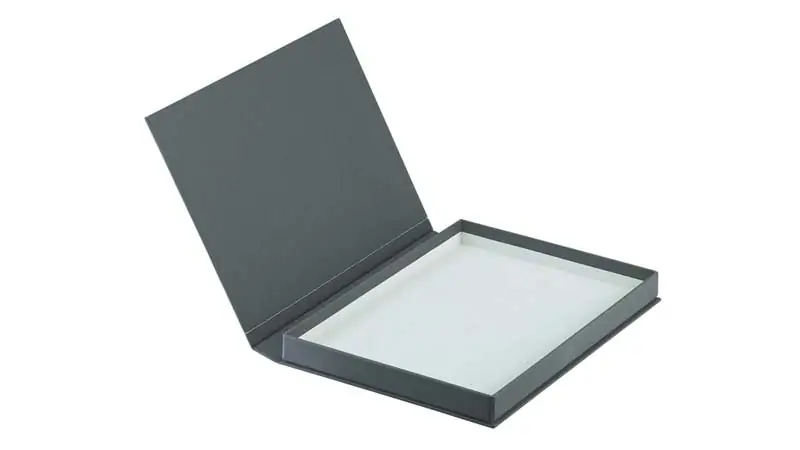Explain the stages through which an export transaction has to pass and describe the various documents involved.
An export transaction has to pass through the following stages:
Receives an inquiry:
The first step in an export transaction is the receipt of an inquiry by exporter from an importer. A foreign buyer makes inquiry in order to obtain information relating to specifications and price of goods that he wants to buy. The reply to such an inquiry is in the form of a quotation that contains particulars such as delivery schedule, payment terms, names and address of the buyer, price and terms of sale etc.
Receives and scrutinises the order from importer:
After accepting the quotation, the importer places an order or indent with the exporter. Exporter should enter into the contract according to the prevailing export policy and foreign exchange regulations of India. After accepting the terms and conditions of the order, a confirmation in writing containing details of the order, terms and conditions etc, should be sent to the buyer as early as possible.
Obtains an export licence:
Foreign Trade Act, 1992 governs the development of foreign trade in India. As per this act, exports and imports can take place. If the exporter wants to obtain an export licence, he has to apply to the Director General of Foreign Trade or Regional Licencing Authority on the prescribed form. Exporter will get an export licence after the licencing authority gets satisfied.
Manufactures/Procures Goods:
With the confirmation of the export order, preparations for production of goods are started. The Manufacturer exporter has to send a delivery note containing description of goods given in export order and a copy of instructions given by importer to the factory manager. He should be informed clearly about the date of shipment. daze of completion of formalities and date by which goods must be manufactured. It is not required by merchant exporter to get goods from the market or from other manufacturers.
Fulfills exchange regulations:
It is the duty of every exporter to fill up a declaration on the prescribed form if he wants to export his goods directly or indirectly to any place that exists outside India other than Nepal and Bhutan and send it to Reserve Bank of India. The declaration is made regarding full value of the goods to be exported or prevailing market value of the goods. Foreign exchange formalities require certain documents like OR form, UP/COD form and SOFTEX form.
Books shipping space:
The exporter has to make arrangements for transport by entering into an agreement with shipping company for transporting the goods to importer. This duty is handed over to a freight broker or agent. He obtains shipping order containing instructions for the captain of the ship regarding the goods from the shipping company on behalf of the exporter. The exporter may enter into an agreement with the company called charter party under which he may charter the whole or a major part of ship, if consignment is very big or large.
Gets Excise Clearance and Pshipment Inspection:
The exporter can get the clearance from excise authorities after manufacturing the goods in two ways. One, at the time of removing the consignment from factory, he can pay the excise duty and then file a claim for refund of the duty after exporting the goods. Second, he can execute a bond in order to secure clearance on terms and conditions as collector of excise may decide. Exporter, according to prescribed specifications, has to make arrangements for shipment inspection. A certificate of inspection is issued after the goods conform to the prescribed specifications.
Packing and Marking:
Packing helps in providing protection to the goods. Packed goods should be according to the requirements of buyer, customs and shipping company. According to the importer’s instructions, a distinct shipping mark should be there on each package. Certain markings like gross weight, fare, net weight with measurements should be there on the package,. Handling instructions like.handle with care should be marked on package, if goods are fragile in nature.
Appoints Clearing and Forwarding Agents:
Clearing and forwarding agents are appointed by the exporter so that they can take care of all shipping and customs formalities and actual loading of goods on board the ship. Various functions are performed by them like negotiation of shipping contract, customs formalities, securing bill of lading, loading goods in the ship and.packing and marking the goods.
Customs formalities:
After taking the delivery of the consignment and storing it in the warehouse, clearing and forwarding agents take necessary steps to comply with customs formalities. An agent has to prepare a document called shipping bill showing the exporter’s name and address, description of goods like numbers, quantity, value etc, country from which they are exported and name of the vessel and port where goods are to be discharged.
Other documents are also needed along with shipping bill for getting clearance from the customs like AR-4 form, GR form, original order or letter of credit, commercial invoice, packing list and declaration form. After exporter finishes all the formalities and satisfy the customs authorities, a customs export pass is issued to him on the duplicate copy of shipping bill.
Insurance of goods and ECGC Cover:
It is duty of the exporter to get the goods insured against various kinds of risks involved in transit. It is essential to get the goods insured and insured for an amount that not only comes the value of goods but also a reasonable profit. Certain risks of political and commercial nature like civil war in importing country or insolvency of the buyer can be covered by getting the shipment insured with ECGC. ECGC helps the exporter in securing export finance from banks.
Places the goods on Board the ship:
The exporter can deliver his goods directly to the dock and obtain a dock receipt after securing the customs export pass. A mate’s receipt is issued by the mate after he gets satisfaction with the packing of goods. He will make a remark, if he is not satisfied. To avoid such a ‘remark, exporter should take proper care in packing the goods.
Obtains Bill of Lading:
It is a document that helps the shipping company acknowledge the receipt of goods on board the ship. Without this bill, the goods cannot be claimed. Bill of lading should be produced as soon as the goods reach the foreign port in order to claim them. It is not negotiable and it contains terms and conditions on which goods are to be delivered to the destination port.
A legal right to the goods will not be given if Bill of lading is stolen before being passed on. Bill of Lading is marked freight paid, if freight is paid by exporter and freight forward, -if freight is to be paid by the importer of the goods.
Collects necessary documents and dispatches shipment advice to the importer:
Forwarding agent returns .the documents such as a copy of invoice duty attested by customs, copies of shipping bill, letter of credit in original, duplicate copy of AR-form and GR form, export order in original and a set of clean on board bill of lading to the exporter after goods are placed on board. Exporter sends a shipment advice to importer after getting the above documents, along with certain documents like insurance ‘policy, packing list, commercial invoice and copies of bill of lading which are not negotiable.
Secures Payment:
In order to secure payment of export dues from the importer, various methods can be used. But payment method should be determined by contract between exporter and importer. There are two common methods for securing payment.
Documentary bills of exchange: The exporter gets a promise of payment, after he draws a bill of exchange on the importer. Exporter can send the bill of exchange along with certain documents with particular instructions that importer will get the documents only after accepting bill of exchange or paying it. Through this, exporter can get the payment immediately after shipment of goods.
Documentary credit under letter of credit: In order to get the payment, documentary credit method is the most safer and quicker one. In this, importer makes arrangement for a bank to open a letter of credit in favor of the exporter. In this also, important documents with bill of exchange drawn on importer are sent to importer through the bank of exporter. The negotiating bank checks up the documents and sends the bill of exchange, bill of lading, insurance policy etc, to importer’s bank so as to get the payment. Exporter gets his money immediately, if bill is payable at sight.
Claims the incentives: It is the right of the exporter to claim some benefits like excise rebate, duty drawbacks, tax concessions, special import licences etc. The last but not the least stage in export procedure is to claim these incentives from the government as government provides them with a view to promote exports.




